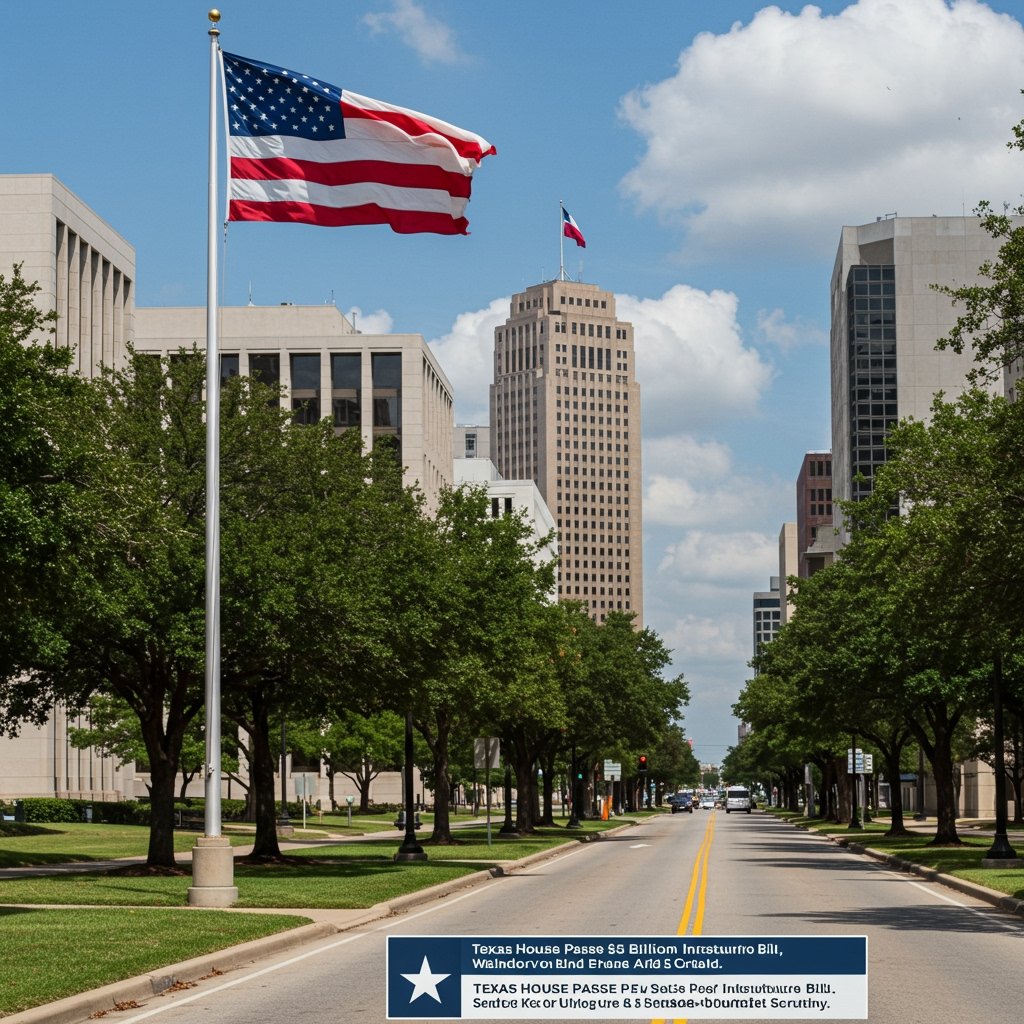Texas House Greenlights Major $5 Billion Infrastructure Investment
AUSTIN, TX – The Texas House of Representatives today took a significant step towards addressing the state’s pressing infrastructure needs, approving House Bill 456 (HB 456), a landmark piece of legislation proposing a substantial $5 billion in state funding. The bill is specifically earmarked for critical infrastructure projects, focusing primarily on the repair of aging highways and the construction of new bridges across the vast state.
The measure passed the House chamber following extensive and often spirited debate, culminating in a vote of 85 votes in favor to 60 against. This margin reflects a notable division within the legislative body regarding the state’s fiscal priorities and the approach to financing large-scale public works projects.
The Urgency of Infrastructure Needs in Texas
Texas, one of the fastest-growing states in the nation, faces immense pressure on its existing infrastructure. Rapid population growth and economic expansion have led to increased traffic congestion, wear and tear on roadways, and the need for modernization of transportation networks. Experts and policymakers widely agree that significant investment is necessary to maintain safety, support commerce, and accommodate future growth. HB 456 is presented by its proponents as a crucial response to this urgent need, aiming to provide a dedicated funding stream to tackle these challenges head-on.
The $5 billion proposed under HB 456 would fund a wide array of projects. While the specific list of projects would likely be determined later, the bill’s scope explicitly includes the repair of aging highways – a critical need as deferred maintenance can lead to more costly repairs down the line and poses safety risks. Furthermore, the construction of new bridges is vital for improving connectivity, reducing bottlenecks, and ensuring the structural integrity of key transportation routes.
Legislative Passage and Floor Debate
The journey of HB 456 through the Texas House was marked by considerable discussion and amendments. Proponents emphasized the long-term economic benefits of infrastructure investment, arguing that the funding would not only create jobs but also improve the efficiency of goods movement, reduce commuting times, and enhance overall quality of life for Texans.
The floor debate saw supporters paint the bill as a necessary investment in the state’s future, highlighting the potential for increased economic competitiveness and reduced congestion-related costs. They argued that the cost of inaction on infrastructure would far outweigh the proposed $5 billion expenditure over time.
Concerns Raised by Opponents
Despite the bill’s passage, it faced strong opposition, primarily from conservative members of the House. These lawmakers voiced significant concerns regarding the bill’s potential impact on the state budget. A core point of contention was the source and nature of the $5 billion funding. While the specific funding mechanism within HB 456 involves state appropriations, opponents cautioned that committing such a large sum could strain state finances, potentially necessitating future cuts in other areas or leading to increased reliance on borrowing.
Opponents specifically highlighted concerns about potential long-term debt obligations that might arise, either directly from the funding mechanism or indirectly by limiting the state’s financial flexibility in the future. They argued for more cautious spending, prioritizing existing budget needs, and exploring alternative funding models that might place less burden on the general state budget or involve more local funding components. The 60 ‘no’ votes underscore the depth of these fiscal concerns within the chamber.
Path to the Texas Senate
With its passage in the House, HB 456 now advances to the Texas Senate. The upper chamber is known for its different dynamics and legislative processes, and the bill is widely expected to face further scrutiny and potential amendments there. Senate committees will review the bill in detail, hearing testimony from state agencies, industry groups, local governments, and concerned citizens. The Senate Finance Committee, in particular, will likely delve deeply into the fiscal implications of the proposed $5 billion expenditure.
The Senate may choose to alter the funding amount, adjust the types of projects eligible for funding, or attach riders related to project selection criteria or oversight. The bill’s proponents will need to build a new coalition of support in the Senate, while opponents will likely continue to raise their concerns regarding the fiscal impact and debt implications. The outcome in the Senate is not guaranteed, and the bill’s final form could differ significantly from the version passed by the House.
Governor Abbott’s Stance
Adding another layer to the legislative process, Governor Greg Abbott’s office released a statement acknowledging the pressing need for infrastructure investment in Texas. The statement from the Governor’s office signaled support for addressing the state’s transportation needs but also hinted at potential adjustments to the final bill. This suggests that the Governor is monitoring the bill’s progress closely and may weigh in on the specifics of the funding and project selection as it moves through the legislative process. The Governor’s potential for veto or line-item veto authority adds another critical stage for the bill after it clears both legislative chambers.
Conclusion
The Texas House’s approval of HB 456 represents a significant legislative milestone in the effort to secure substantial state funding for critical infrastructure projects. The $5 billion bill, aimed at revitalizing highways and building bridges, passed despite notable opposition centered on fiscal concerns and potential debt. Its passage with an 85-60 vote sends a clear message from the House regarding the perceived urgency of infrastructure needs. However, the bill now faces the rigorous review of the Texas Senate, where it is anticipated to undergo further debate and potential modifications before a final decision is reached, ultimately requiring the Governor’s approval to become law. The debate over balancing essential infrastructure investment with fiscal responsibility is set to continue as HB 456 navigates the next stages of the legislative process.






